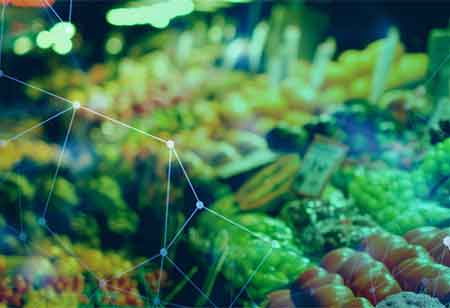Thank you for Subscribing to Food Business Review Weekly Brief
- Home
- Topics
- Alternative Proteins and Plant Based Food
- Beer and Wine
- Canned Beverages
- Coffee And Tea
- Food and Beverage Consulting
- Food and Beverage Financial Service
- Food And Beverages Marketing
- Food Distributors
- Food Ingredients
- Food Sustainability
- Plant Based Food and Beverages
- Seafood Suppliers
- Supplement Manufacturing
- Wine Investment
- News
- Vendor Viewpoint
- CXO Insights
- Conferences
- Newsletter
- CXO Awards
-
Innovative Technologies Shaping the Future of Canned Beverages
Canning technology enhances convenience, sustainability, and portability in the beverage industry. Europe leads in sustainability, offering personalised cans and smaller sizes while focusing on circular economy and energy efficiency.

By
Food Business Review | Friday, October 25, 2024
Stay ahead of the industry with exclusive feature stories on the top companies, expert insights and the latest news delivered straight to your inbox. Subscribe today.

Canning technology enhances convenience, sustainability, and portability in the beverage industry. Europe leads in sustainability, offering personalised cans and smaller sizes while focusing on circular economy and energy efficiency.
FREMONT CA: Canning, a long-established method of food preservation, has evolved considerably over recent decades. In particular, the beverage industry has seen a notable rise in canned product offerings, propelled by consumer demand for convenience, portability, and sustainability. As technology advances, the outlook for canned beverage production is increasingly promising, with innovations that extend shelf life, preserve flavour, and boost production efficiency.
Modern Innovations in Canning Technology
Recent advancements in canning technology have significantly enhanced the shelf life and flavour preservation of beverages while improving production efficiency. Aseptic processing, which sterilises both the drink and the can before filling, eliminates the need for heat processing post-canning, thereby extending shelf life. Additionally, advanced barrier coatings applied to the interiors can prevent the ingress of oxygen and moisture, further prolonging freshness. Ultraviolet (UV) light treatment on the can's exterior effectively eliminates microorganisms, reducing contamination risks and enhancing shelf stability.
Flavour preservation techniques have also evolved. Nitrogen flushing—filling cans with nitrogen before sealing—prevents oxidation, a common cause of flavour deterioration. Controlled Atmosphere Packaging (CAP) allows manufacturers to optimise the internal environment of the can, thus maintaining flavour integrity and preventing spoilage. Furthermore, glass-lined cans minimise metal interaction with the beverage, preserving its taste and aroma.
Regarding production efficiency, the beverage industry increasingly leverages automation and robotics to streamline processes, improve productivity, and lower labour costs. High-speed filling machines can manage larger volumes, boosting production capacity while minimising downtime. Continuous processing lines integrate various stages of the canning operation—such as filling, sealing, and labelling—enhancing overall operational efficiency.
Looking ahead, Europe stands at the forefront of these canning technology advancements within the global beverage market. Several key trends are shaping the region's future of canned beverage production. Sustainability has emerged as a critical consumer demand, focusing on recyclable and biodegradable materials and reducing the environmental footprint of canning processes. Additionally, the increasing desire for personalised beverages has spurred the development of more minor can sizes and diverse product offerings. Innovations in innovative packaging, including QR codes and NFC tags, are also being explored to provide consumers with detailed information about nutritional content and product origin, further enhancing the consumer experience.
The foundational principles of canning have remained consistent over time; however, the nuances of the process have experienced significant evolution. Recent technological advancements have transformed the industry, particularly in can coatings, processing techniques, and packaging innovations.
Advanced Can Coatings have seen improvements such as polymer coatings, which provide superior barrier properties against oxygen, light, and moisture, and epoxy-phenolic coatings, commonly used for canned foods, which offer excellent corrosion resistance and heat stability. In addition, Non-Thermal Processing Technologies like High-Pressure Processing (HPP) and Pulsed Electric Field (PEF) Technology are gaining traction. HPP inactivates microorganisms through high pressure, preserving the product's flavour, colour, and nutritional value. At the same time, PEF employs short, high-voltage electrical pulses, which are particularly beneficial for liquid foods, to achieve similar results without compromising quality.
Intelligent Packaging is another area of innovation, featuring Time-Temperature Indicators (TTIs) that change colour when a product is exposed to excessive heat or prolonged storage, thus ensuring food safety. Furthermore, radio frequency identification (RFID) technology allows for the real-time tracking of product movement and monitoring conditions within the can.
In Europe, where food safety, quality, and sustainability are paramount, these advancements are shaping the future of the canning industry. Key trends include a focus on sustainability and the circular economy, exemplified by efforts to reduce packaging through lightweight designs and recyclable or biodegradable materials. Additionally, energy-efficient production methods are being implemented to minimise the carbon footprint of manufacturing processes.
Consumer-centric innovation is also prominent, with a growing emphasis on convenience and portability through various can sizes and formats and health and wellness initiatives prioritising clean labels and natural ingredients. Moreover, technology facilitates personalised nutrition, allowing customised product formulations and packaging tailored to individual consumer preferences.
Canning technology has significantly advanced since its inception. Modern materials, processes, and automation developments have transformed beverage production and consumption. As technology progresses, further innovations are anticipated to enhance product quality, sustainability, and consumer convenience.






